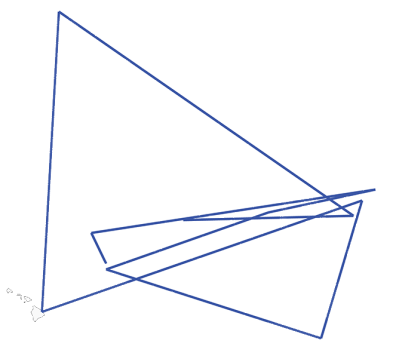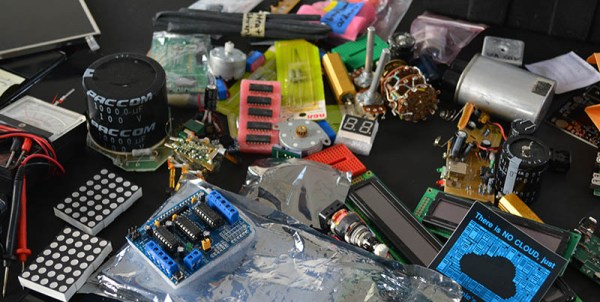Imagine if the Snap-on tool truck wasn’t filled with hand tools. Imagine if that Snap-on truck was a mobile electronics surplus shop. That’s the idea behind the Travelling Hacker Box. It’s a box, shipped from hacker to hacker, filled with weird and esoteric components, enough parts to build a 3D printer, and enough capacitors to stop an elephant’s heart.
If this is the first time you’ve heard about the Travelling Hacker Box, here’s the quick FAQ to get you up to speed. Has this been done before? Yes, yes it has. The Great Internet Migratory Box of Electronics Junk was a ‘thing’ done by Evil Mad Scientist back in the ‘aughts. Hackaday (or rather the old commander in chief Eliot) received one of these boxes, and sent it off to [Bre Pettis]. Keep in mind, this was in 2008. Is there more than one Travelling Hacker Box actively travelling? No. Because I don’t want to organize a second. Either way, the Travelling Hacker Box has two goals: distance travelled and number of people visited. With just one box, we can maximize both objectives. What are the current travel plans? That’s the next paragraph.

As of right now, the second version of the Travelling Hacker Box – the first box was stolen by some waste of oxygen in Georgia – has travelled at least 21,838 miles around the United States, visiting 11 prolific hackaday.io contributors in Wyoming, New York, Alaska, Hawaii, New Hampshire, Florida, Wisconsin, Maine, and California. The goal for the first dozen or so trips across the United States was to put miles on the box. 25,000 miles would be equivalent to a trip around the world using only US Postal Service flat rate boxes. Thanks to [Lloyd T Cannon]’s reinforcement of a medium flat rate box with canvas, foam, Kevlar, and custard, this iteration of the Travelling Hacker Box has held up spectacularly.
The goal for the next two months is to make a trip around the United States to maximize the number of US hackers who contributed to the box. This trip will start in Pasadena, CA, go up the west coast to Seattle, loop around the Canadian border to New England, go down the Eastern seaboard, across to Texas, over the desert, and land back at Home Base in Pasadena. From there, the Travelling Hacker Box is off to England, the EU, Asia, India, maybe Africa, and Australia.
While there are already a few people scheduled for this last trip around the US, more are needed. If you’re interested, check out the project on hackaday.io, request to join the project, send a message on the team chat, and generally bug me on the hackaday.io chat. There are plenty of spaces to fill in this last trip around the US and the current inventory is quite a haul. Not bad for a project that will eventually be stolen.












